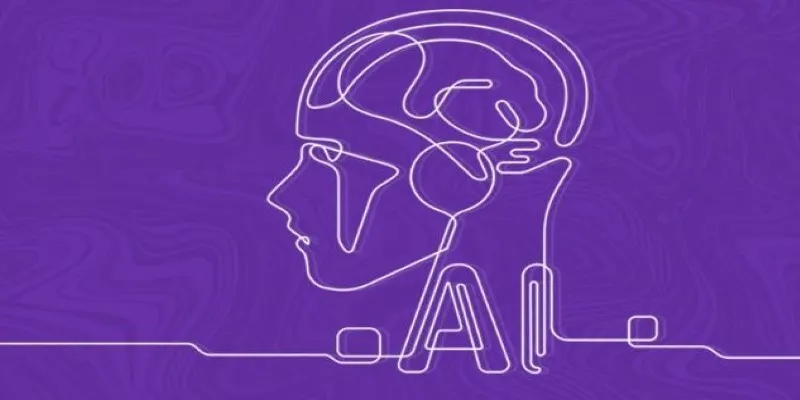Most people wouldn’t immediately associate “survival of the fittest” with lines of code, but evolutionary algorithms and genetic programming prove otherwise. Inspired by nature, these AI techniques leverage trial, error, and adaptation to tackle complex problems. Unlike rigid algorithms, they evolve solutions over time, using randomness with a clear purpose. They excel in scenarios where perfect answers are impossible or impractical, providing flexible, satisfactory solutions.
While not as renowned as deep learning, these methods quietly drive optimization, robotics, and machine learning tasks. Their natural, human-like approach makes them essential in modern AI, solving challenging problems with persistence, creativity, and smart adaptation.
Understanding Evolutionary Algorithms
Evolutionary algorithms are not a singular technique but a family of approaches based on the principles of evolution—natural selection, mutation, and inheritance. They are designed to solve optimization problems, especially those where traditional math falters or where the search space is too large and irregular for brute force methods.
Imagine trying to find the most efficient design for a solar panel array on an uneven landscape with varying sunlight, temperature, and wind. An equation might miss the subtleties, but an evolutionary algorithm can start with a set of random designs and gradually refine them generation after generation.
These algorithms don’t need to “understand” the problem. Instead, they test candidate solutions, evaluate their performance (using a fitness function), and then generate a new population by retaining strong performers and slightly mutating them. Over time, weaker solutions are eliminated, stronger ones multiply, and the population as a whole moves toward better outcomes.
It’s not guaranteed to find the best solution, but that’s not always necessary. What matters is that it often finds a good one when other methods fail. That’s the quiet strength of evolutionary algorithms. They are adaptable, robust, and capable of handling uncertainty, noise, and complexity in ways most algorithms cannot.
Genetic Programming: Evolving Code Instead of Solutions
While evolutionary algorithms evolve numbers, parameters, or physical designs, genetic programming takes it a step further—it evolves actual programs. Think of it as breeding code. Instead of optimizing a fixed structure, genetic programming generates small programs or code snippets and evolves them over time to solve specific tasks.

This approach works particularly well when the solution isn’t just a set of values but a process. For example, imagine trying to teach a robot to sort objects by shape and color in a room with shifting lighting and surfaces. Manually writing the logic might result in a brittle solution. With genetic programming, the system starts with simple pieces of code that perform basic actions or checks. These fragments are combined, mutated, and selected based on task performance. Over time, the system discovers increasingly complex and effective logic structures—sometimes those even the programmer hadn’t considered.
The key lies in the representation. Genetic programming typically uses a tree- like structure, where each node is an operation (like “if,” “add,” or “move”), and the branches represent inputs or actions. This structure allows for flexible growth and mutation, crucial when the goal isn’t just to reach a number but to design behavior.
Despite its complexity, the beauty of genetic programming is that it often results in interpretable solutions. Unlike neural networks, which are typically black boxes, the evolved code can usually be read and understood—though it may be flawed and messy, it is at least visible.
Where These Methods Thrive (And Why They’re Still Relevant)
There’s a reason these techniques have endured despite the boom in neural networks and machine learning. Evolutionary algorithms and genetic programming excel where other methods falter, particularly with non-differentiable, irregular, or poorly understood problem spaces. They don’t require clean data, gradients, or labels. All they need is a way to score candidate solutions and a large enough search space to explore.
A classic use case is engineering design—ranging from turbine blades to antenna shapes. NASA famously used genetic algorithms to evolve a radio antenna for a satellite mission, resulting in an unconventional design that outperformed traditional models. In finance, evolutionary algorithms help tune trading strategies or optimize portfolios in unpredictable markets. In creative fields, genetic programming has been used to evolve generative art, music, and even poetry.
There’s also growing interest in using these methods to evolve machine learning models themselves—a process known as neural architecture search. Instead of hand-crafting neural networks, you let evolution do the work. It might take more computing time but removes human bias and often uncovers architectures that outperform handcrafted ones.
And perhaps most importantly, these methods are explainable in a way most modern AI isn’t. They don’t require vast datasets or backpropagation. They’re slow, yes—but transparent. You can watch the solutions evolve, see why one version was chosen over another, and track the lineage of an idea. In a world increasingly wary of black-box AI, that visibility matters.
A Future Rooted in Nature’s Blueprint
Despite being decades old, evolutionary algorithms and genetic programming are far from obsolete. If anything, they’re becoming more relevant. As AI systems are pushed into messier, more human-like domains—where rules are fuzzy, problems are unstructured, and perfect solutions don’t exist—these nature- inspired approaches feel increasingly like the right tools for the job.

What’s fascinating isn’t just that they work—it’s how they work. There’s something poetic about using random mutation and survival of the fittest to build intelligence. It’s not about brute force or elegance. It’s about resilience. It’s about making progress even when the path is unknown. That’s a very human kind of intelligence.
Conclusion
Evolutionary algorithms and genetic programming demonstrate that the most effective solutions often come from nature’s way of adapting and evolving. In a world full of unpredictable challenges, these methods offer flexibility and resilience rather than rigid perfection. Their ability to improve through experimentation and gradual progress makes them ideal for real-world problems. As technology continues to advance, these nature-inspired approaches will remain essential, reminding us that adaptation and evolution are often the smartest paths forward in artificial intelligence.
 zfn9
zfn9















